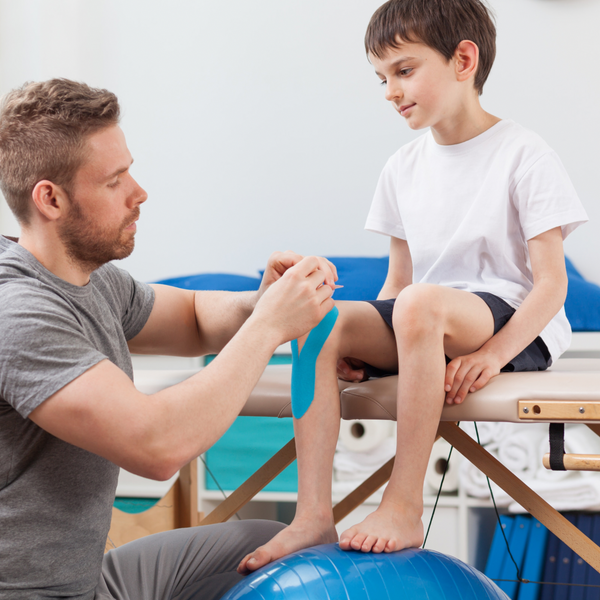
Pediatric Physiotherapy
Whenever it is brought into conversation that I LOVE treating kiddos, the first response I usually get is a surprised “You treat kids?” or “Why would a kid need physiotherapy?”. There are lots of reasons it may be appropriate for an infant, kid, or teen to come to the clinic and see benefit from physio treatment.
Physiotherapist treat babies as young as a couple weeks old to teens reaching adulthood. In each age group there are common musculoskeletal injuries or disorders, and developmental problems that may arise.
In infants, a common concern is neck tightness on one side (called torticollis) causing the baby to have a head tilt or preference to having their head face a certain direction. This can lead to flat spots on the back of the baby’s head (known as plagiocephaly). Physiotherapists coach parents and caregivers how to stretch the neck correctly and provide information as well as baby focused play exercises and positions to help ensure the head develops without flat spots or correct the flat spot if it is already begun to form.
As babies begin to grow and develop there may be concerns about if your child is hitting the proper milestones within the expected time frame. A gross motor assessment to see where your child is falling on the developmental curve compared to age-match norms gives a good idea of which skills are progressing well (for example, sitting unsupported, balance, pulling to stand, taking steps independently) or which may need a targeted intervention.
Once children start into sport and activity injuries may arise. Physiotherapy can get your kiddo back to their preferred activities quick and without relapse of symptoms. Similarly, if an accident like a broken bone occurs, PT can help make sure there are no long-lasting deficits. Another common concern is growing pains. Rapid changes in bone length can cause the muscles to pull more aggressively on their boney attachments causing pain. If your kiddo is complaining of leg pain and you notice a lump starting to form just below the knee or at the back of the ankle that is tender to touch, PT can help reduce the pain and stretch the muscles involved.
Is your kid way clumsier than their peers? Do they have a hard time learning new motor skills (like hitting a baseball) or have a hard time transferring already learned skills (ex. If they already know how to hit a baseball but started tennis or badminton and had to learn the same swinging motion from scratch?). Are they also struggling with tying their shoes or their penmanship? It might be more than a clumsy kid. Developmental Coordination Disorder (DCD) affects 5-6% of school aged children. If your child is struggling with common everyday tasks a PT assessment and treatment plan can help. We can even liaise with gym teachers and classroom teachers to help come up with strategies or adapted programing.
Finally, children with diagnosed neurological or genetic conditions are commonly seen in physiotherapy as these conditions typically impact development, muscle tone, independent walking, and mobility. Some examples are cerebral palsy, spina bifida, autism, downs syndrome, and many more. PTs can also help determine what equipment your child might need to ensure the best integration with peers at their age-level (ex. Standers, walkers, orthotics).
If you have questions or concerns about your child book in with a physiotherapist today. We cannot wait to see you in clinic!
- Jill, PT
Grand Falls, NB: 473-7064
Woodstock,NB: 325-1565
Truro,NS: 1-833-U-R-HEARD
